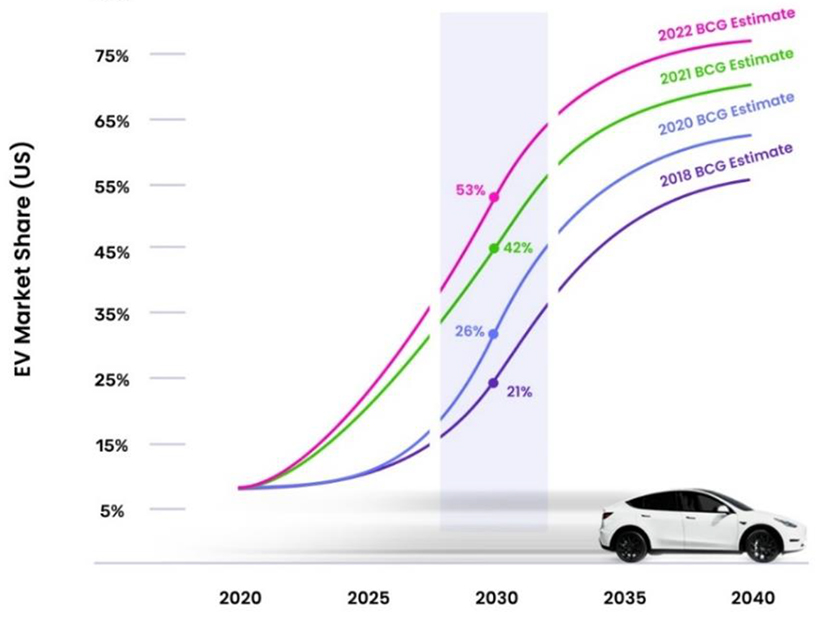
In a newly published white paper, NERC warned that remaining industry “knowledge gaps” around electric vehicles and their charging systems may make it difficult for grid operators to maintain reliability.
The Potential Bulk Power System Impact of Electric Vehicle Chargers report, released Feb. 8, examines the effect that the adoption of EVs — specifically, the widespread installation of EV chargers at homes and businesses — might have on the reliability of the North American electric grid.
NERC has studied the topic before, releasing a report last April with WECC and the California Mobility Center on the performance of EV chargers during grid disturbances. (See NERC, WECC Outline EV Charging Reliability Impacts.) The new white paper was intended to build on this study, as well as a similar report by Pacific Northwest National Laboratory released in 2021.
Citing a 2022 projection from online EV marketplace Recurrent Auto, NERC noted that EVs are now expected to account for more than half of new vehicle sales in the U.S. by 2030. This is more than double the expectation when Recurrent first performed the projection in 2018 and is based on market factors such as growth in consumer demand and supply chain improvements.
An EV owner is necessarily also an EV charger, and grid planners will need to account for the load created by all these new sources of demand for electricity. This challenge comprises the main focus of NERC’s white paper.
The ERO noted that “larger EV charging loads are anticipated to use higher charging levels that necessitate direct connection to the BPS to supply a large EV charging load.” At the same time, the mobile nature of EVs means they could conceivably charge at any location, whether they have the specialized equipment for faster charging or not. This adds an element of uncertainty to load forecasting.
In addition, NERC pointed out that EV charging can be “grid-friendly” or grid-unfriendly depending on the approach used. Grid-friendly charging supports the stable operation of the grid by reducing voltage when grid voltage drops, while unfriendly charging increases voltage during such times, putting more strain on the grid. An overabundance of grid-unfriendly charging stations could have a negative effect on reliability.
The white paper includes the results of a study performed by NERC to evaluate the potential effect of EVs on reliability. In the study, a single base connection represented the Western Interconnection, with the team altering elements of the scenario to simulate large-scale EV adoption. Four cases were developed: a long-term horizon under heavy summer conditions with and without high EV adoption, and near-term horizon under light spring conditions with and without high EV adoption.
The study team found that EV chargers did exhibit some troubling behavior in their simulations. For example, some chargers appeared to exhibit a delay in sensing system faults and performing ride-through behavior or changing their tripping modes, which could slow system recovery. The team also noticed delays in returning to pre-disturbance consumption, which might also complicate operators’ visibility into the state of the system.
NERC recommended that manufacturers of EVs and charging systems improve their collaboration with electric utilities and “establish performance criteria and standards regarding grid-friendly EV charging methods.” The ERO said that if such collaboration proves difficult, policy makers may need to intervene.
The white paper also recommended that transmission planners incorporate charger performance into their planning criteria to indicate the performance types that are grid-friendly for their area. NERC suggested manufacturers could “address these criteria with EV charging software updates.”


